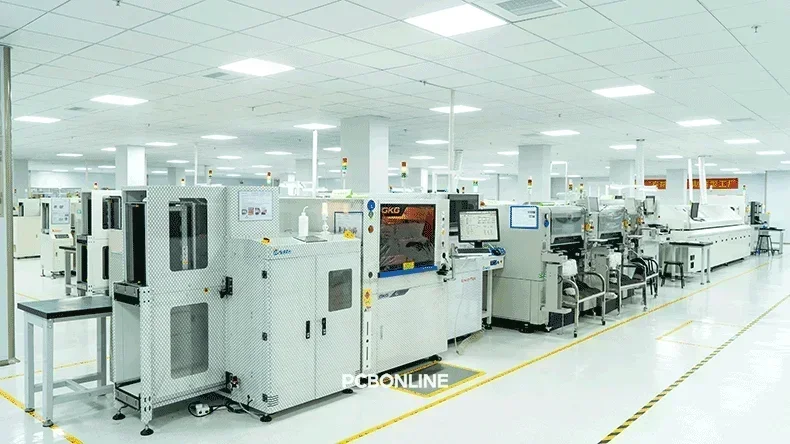
SMT, or surface-mounted technology, is the most important and mainstream PCB assembly technology in electronic manufacturing. SMT assembly picks and places surface-mounted devices on the printed circuit boards and connects them reliably through reflow soldering. An SMT production line is fully automatic, equipped with in-line SPI (solder paste inspection) and AOI (automatic optical inspection).
In this article:
Part 1. Is It Important to Visit an SMT Line? Part 2. Advantages of an SMT Line Part 3. Equipment of an SMT Line Part 4. Production Process in an SMT Line Choose the Turnkey PCBA Manufacturer PCBONLINE for SMT AssemblyIs It Important to Visit an SMT Line?
Is it important to visit an SMT line? Of course, for in-house electronic engineers, end-terminal companies, solution companies, business makers, and research institutes, it’s important to visit an SMT line to ensure the PCB assembly capability, access the quality control, verify the technology level, and judge the production management before deciding a long-term PCB assembly service supplier.
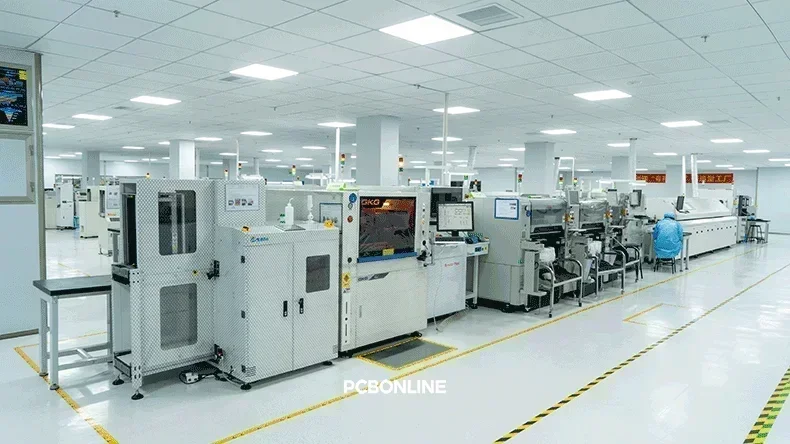
By visiting an SMT line, you can check:
- How many SMT lines does the PCBA manufacturer equip with?
- Whether the SPI and AOI machines are complete and in the SMT production line.
- Whether the PCBA manufacturing process meets the RoHS lead-free requirements.
- Whether the PCBA manufacturer has fine-pitch assembly capabilities, including BGA, 01005, and CSP.
- Whether the SMT factory is equipped with a first-article inspection.
- Whether the PCBA manufacturer can provide quality traceability, including SMT process specs, material serials, and operation records.
- Whether the SMT line is tidy, with SOPs, and whether the workers are trained.
Advantages of an SMT Line
SMT assembly is the most critical mounting technology, and 90% of electronics use it for assembly.
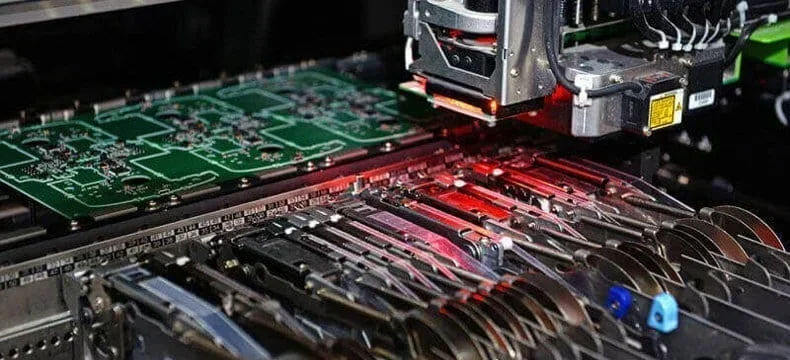
The advantages of an SMT line are:
Automatic production: An SMT line achieves automatic PCB assembly. With more automation, the more manufacturing consistency. At PCBONLINE, the SMT lines are fully automatic, elevating efficiency and reducing human errors.
Supporting minimization and high-density: The surface mount devices are small, and SMT assembly supports double-sided mounting. Light, thin, high-density circuits and compact-space devices all require SMT assembly.
Reduced costs: An SMT line is ideal for mass production to reduce the unit PCBA price.
Versatility: All electronic components can be made into the SMD form for surface mounting. All electronic applications, such as consumer, communication, automotive, medical, computer, industrial, agriculture, and aerospace, apply SMT for PCB assembly.
Reliability: The SPI and AOI inspections ensure the surface security. The pick-and-place (PNP) machines rely on visual positioning technology to precisely mount the SMDs. The reflow soldering process is programmable, where a reliable soldering joint is formed to connect the PCB and the component.
Equipment of an SMT Line
At an OEM PCB manufacturer, PCBONLINE, the SMT lines are lead-free, support mounting 376 components, and include AOI inspections both before and after reflow soldering.
The equipment of a complete SMT line from the beginning to the end includes:
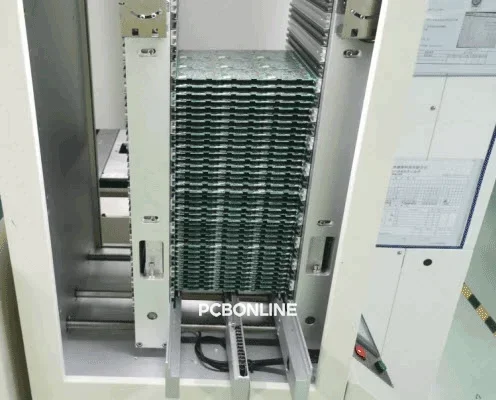
PCB loader: Load blank PCBs onto the SMT line and automatically send the board one by one to the next machine.
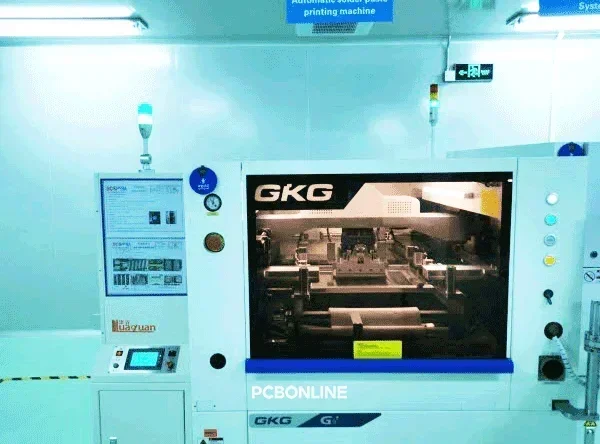
Solder paste printing machine: Silkscreen print the solder paste through an SMT stencil onto the copper pads of the PCB.
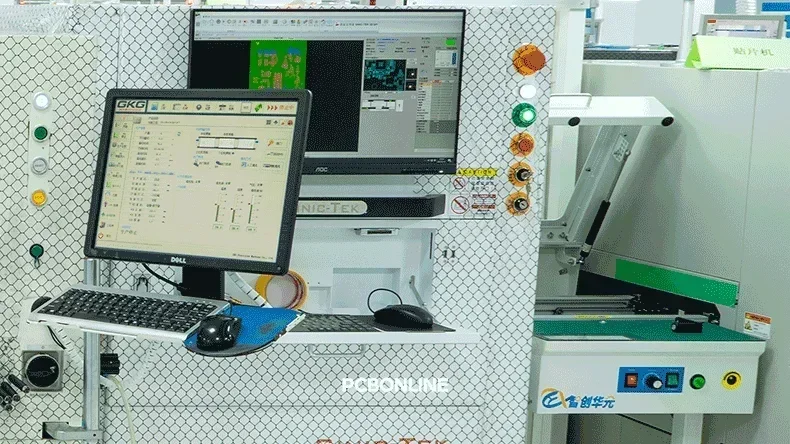
SPI machine: Inspect the solder paste printed on the PCB pads.
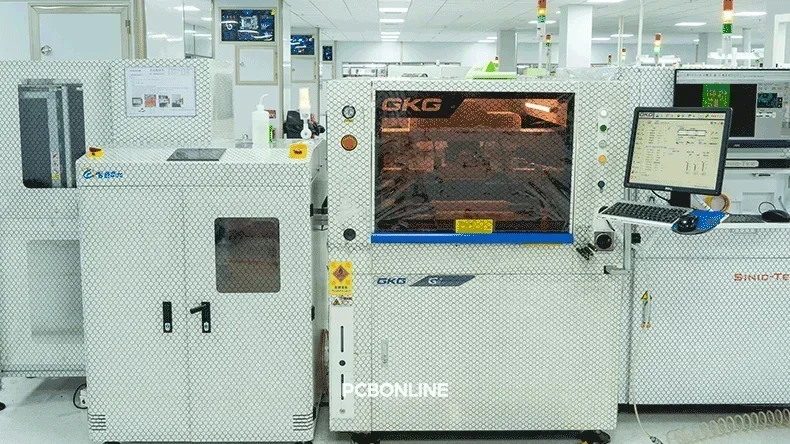
PNP machines: Two high-speed PNP machines, YAMAHA YSM20R, each having 140 SMD slots, mount small-footprint SMDs. One functional PNP machine, YAMAHA YSM10, having 96 SMD slots, mounts large-footprint SMDs.
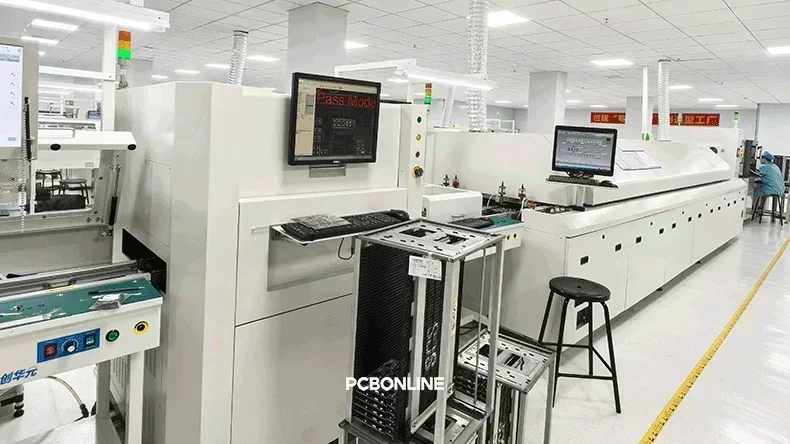
AOI prior to reflow: Inspect the component placement.
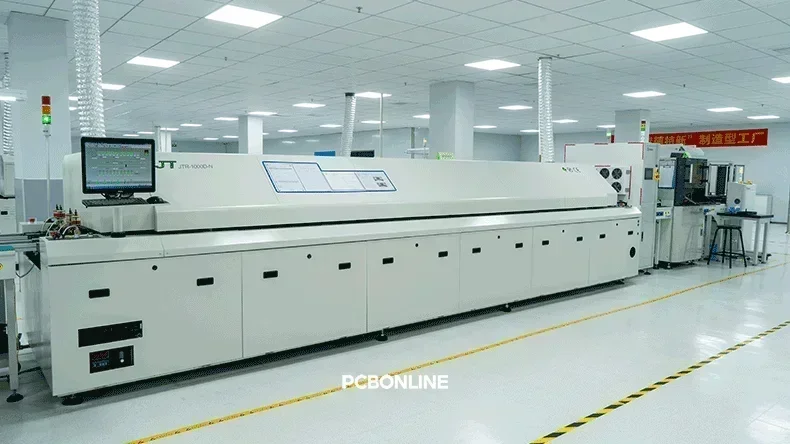
Reflow oven: Programmable winds, speeds, temperatures, and guide angles. Include 10 temperature zones for preheating, soaking, soldering, and cooling.
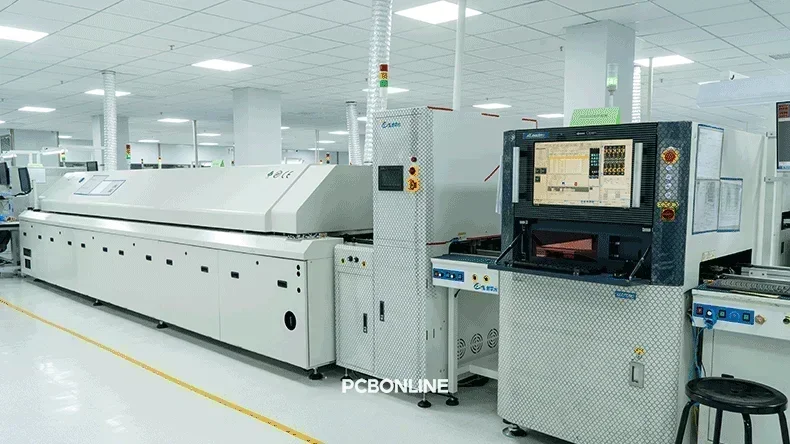
AOI after reflow: Inspect soldering quality.
Production Process in an SMT Line
PCBONLINE, an OEM PCBA manufacturer providing turnkey PCB assembly for clients globally, has four SMT lines for lead-free electronics manufacturing.
SMT production is automatic, and its process is below.
Step 1. Load the PCB
Blank PCBs are inserted into the slots of the PCB magazine rack, and the rack is installed in the PCB loader. The PCB loader will send the PCBs one by one for printing solder paste in the next machine.
Step 2. Solder paste printing
A bare PCB is sent into the solder paste printing machine and pauses once the machine recognizes it beneath the SMT stencil. A scraper presses the solder paste at a programmed speed, strength, and angle to let it go through the openings of the stencil to print on the PCB pads.
Step 3. SPI inspection
The PCB passes the SPI machine, which scans it and compares the images with the reference to ensure the solder paste is in qualified sizes, thicknesses, and positions.
Step 4. Pick-and-place components
The two high-speed PNP machines pick capacitors, resistors, inductors, and other small-footprint SMDs from the feeder slots and place them quickly on the PCB. Up to 140 SMDs can be mounted.
The functional PNP machine picks and places ICs/MCUs/BGAs, connectors, sockets, USBs, and other large-footprint SMDs on the PCB. Up to 96 SMDs can be mounted.
Step 5. AOI prior reflow
The board passes the AOI machine, which scans the components and the PCB surface, ensuring no excess solder, prone to component lift, missing components, or misalignment.
Step 6. Reflow soldering
The circuit board is sent into the reflow soldering oven. It is preheated and soaked to melt the solder. In the soldering temperature zones, especially at the peak of the profile, the melting solder, copper pads, and the surface finish undergo a phase change to form the metallic compound. Then the PCBA is cooled down.
Step 7. AOI after reflow
The PCBA board passes the AOI machine, which ensures no reflow soldering issues, such as tombstoning, solder voids, bridges, open circuits, insufficient solder, etc.
First-article inspection & X-ray inspection
The first-article inspection and X-ray inspection are independent of the SMT lines.
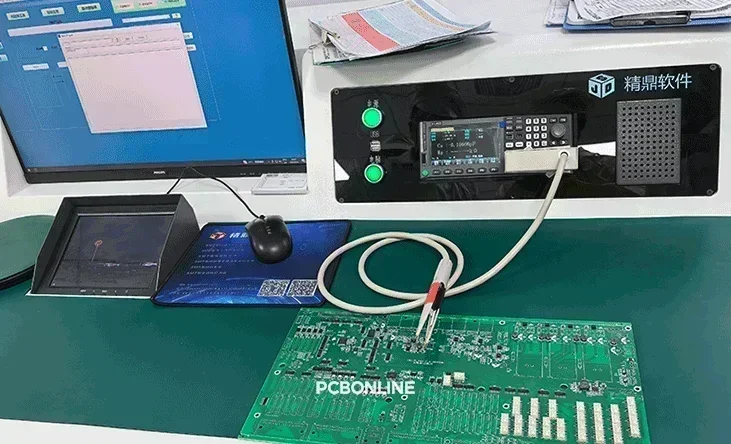
The first-article inspection ensures the components mounted on the PCB are within the accepted tolerance range.
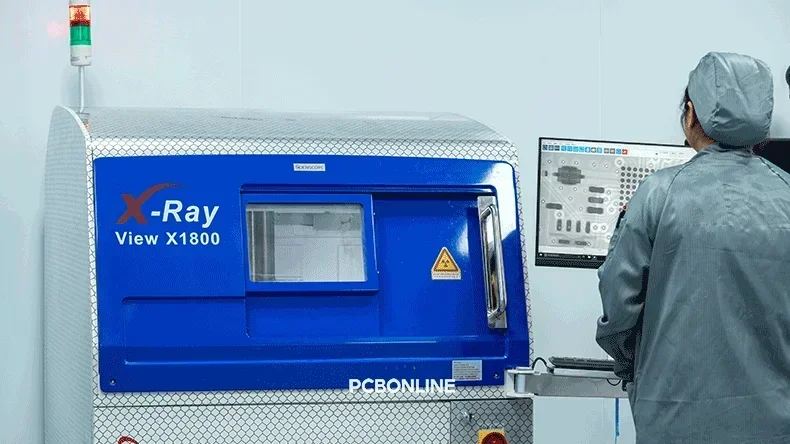
The X-ray inspection uses X-rays to inspect the solder balls or contacts between the no-lead or grid-array ICs and the PCB, ensuring the soldering is qualified.
Choose the Turnkey PCBA Manufacturer PCBONLINE for SMT Assembly
If your project requires both SMT and PTH assembly for electronics manufacturing, consider partnering with PCBONLINE, an OEM PCBA manufacturer that delivers complete, turnkey solutions. PCBONLINE provides not only SMT assembly, but also PTH assembly, PCB fabrication, component sourcing, fixtures, enclosures, box-build assembly, value-added services, testing, and shipping the finished devices you can sell.
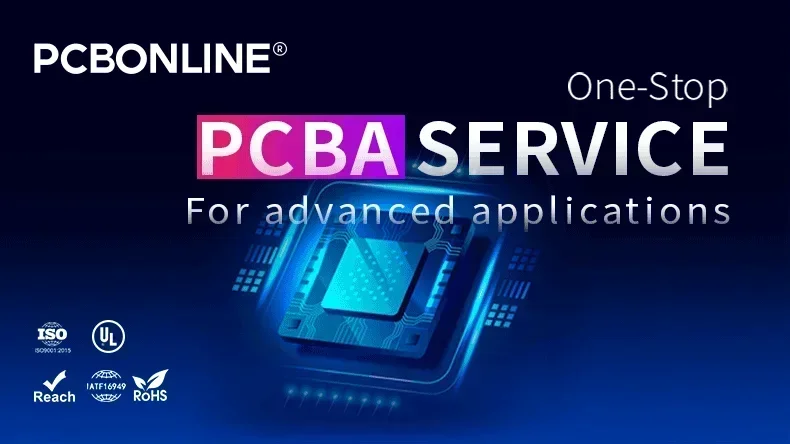
PCBONLINE is an OEM PCB source factory manufacturer founded in 1999. It has two large advanced PCB manufacturing bases independently fabricating all types of PCBs, one EMS (electronic manufacturing service) PCB assembly factory with two component warehouses, stable supply chains, and an R&D team. Besides, it keeps long-term cooperation with the top 3 mold/enclosure manufacturers in China to provide the molds, jigs, and enclosures for full box-build solutions.
Each SMT line at PCBONLINE is equipped with three advanced pick-and-place machines, supporting up to 376 SMD placements per PCB, enabling us to handle all types of SMT assembly, including high-density and large-format boards.
Our SPI and dual AOI systems perform 3D surface scanning, offering thorough and accurate inspections for superior quality control throughout the process.
We conduct first-article inspections both before prototype assembly and before mass production to ensure the highest PCBA quality and prevent costly issues.
Our experienced R&D and engineering teams provide one-on-one support, solving technical and non-technical challenges while offering optimization suggestions to ensure your project runs smoothly from start to finish.
High-quality PCBA manufacturing certified with ISO 9001:2015, ISO 14001:2015, IATF 16949:2016, RoHS, REACH, UL, and IPC-A-610 Class 2/3.
When your project enters the bulky production stage, PCBONLINE refunds the fees of prototyping, including its value-added services.
No matter what quantity of boards you order, PCBONLINE prioritizes quality. To get a quote from the SMT PCBA manufacturer PCBONLINE, contact info@pcbonline.com.
Conclusion
It's important to visit an SMT line before choosing a PCBA manufacturer. A complete SMT line features in-line SPI and dual AOI, with a fully automatic production process. Additionally, outside the SMT line, there is the first-article inspection. The turnkey PCBA manufacturer, PCBONLINE, has complete SMT lines and rich PCB assembly experience. To ensure the success of your PCB/PCBA projects, send the quote request from the table on the right to work with PCBONLINE.
PCB assembly at PCBONLINE.pdf




